One of the benefits of staying longer at the
Jamuna resort is that we are able to move into the Golden Room that has
been painted like the havelis of Shekawati.
|
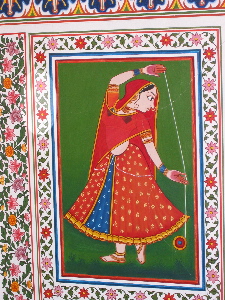 |
Staying in the room is a little unnerving.
The detail and complexity of the painted designs makes your head swim.
After two nights we switch to a more modest room.
|
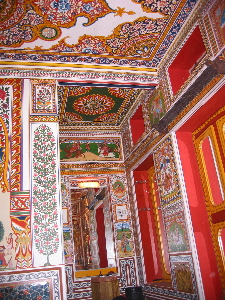 |
Laxmi drives us to a Hindu temple that seems
to be based on sati, the practice of widows killing themselves on their
husband's funeral pyre.
|
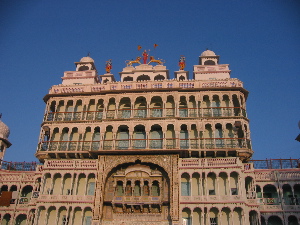 |
We also stop to see an old
well that used to be the center of the community. Everyone would come
here in the morning to draw water, bathe, seek counsel from elders, and
gossip. The advent of home plumbing has left a hole in the communal
fabric.
|
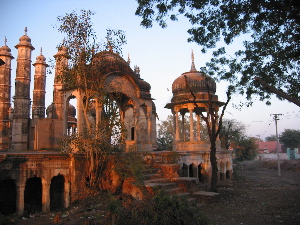 |
The four towers in the center were the symbol
announcing the well to all visitors.
|
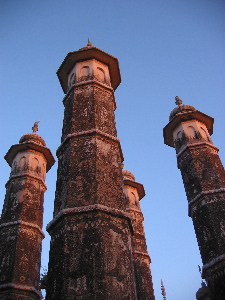 |
We manage to convince the staff to give us an
Indian cooking lesson in the middle of one of the busiest dinner hours.
The man on the left is the head chef. On the right is the head waiter
(who bicycles 240km to Jaipur to play bicycle polo).
|
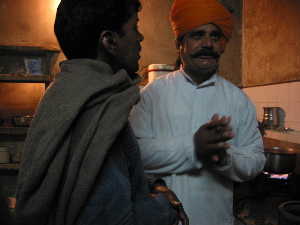 |
The spices are in these large wooden boxes
that the cook reaches into with his ladle to make each dish as it is
ordered. I saw no measuring devices anywhere.
|
 |
Three other cooks did the chopping and made
the chapatis (flat bread). There is a lot of garlic, onion, and
corriander in most of the curries.
|
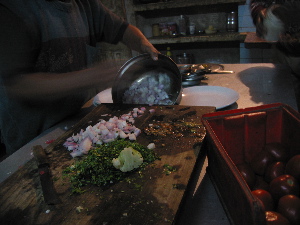 |
Julie takes notes and tries not to look too
closely at that wall above the tile.
|
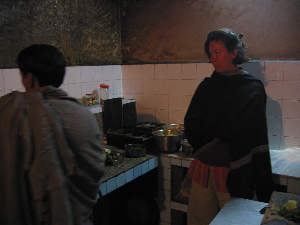 |
|
|
|
|

















